Disclaimer: wacky hats, awful uniforms, and Mussolini lookalikes to follow.
Let me introduce you, readers, to the “Ordine Militare et Hospitaliero di San Lazzaro di Gerusalemme- Malta” (but, as far as I can tell, is not actually based in Malta). This group has gained a lot of attention recently for its events, and what one might call slightly more adventurous attire. The self-styled Order does certain charity work, although this is, in this writer’s opinion, most likely in order to boost its own credibility. On their website, it gives an obscure history written by their ‘Grand Prior’, H.H., the Chevalier, Grand Commander, Vittorio Galoppini di Carpenedolo GCLJ-J, GCMLJ, GMLJ, GCrLJ, Don1LJ, MMSLJ. Oddly enough, all of this man’s honours seem to be from the same organisation, and you’d never guess which one… The Order of St Lazarus!

Left to right, Ezio Scaglione, Oskars Jānaitis, Vittorio Galoppini, Web Deutschmeister, and Bonfissuto Carlo
Many of the group’s officer’s claim to have a number of important titles. Their Chancellor, Ezio Scaglione, has made a bizarre list of claims which I feel are too long (and amusing) to be included in this article, so will be covered individually at a later date. The Group’s “Grand Master”, claims to be known as, His Royal Highness, Prince Pieter Cantacuzino. The only links I could find to him after an extensive internet search were to (no surprises here) the organisation’s own website. The organisation’s Prior, Bonfissuto Carlo (who bears a striking resemblance to a certain Italian dictator), claims he is ‘Count of Acquanegra’, and seems to be a member of dozens of ‘Orders’, many of which I’m not sure even exist. But don’t say that to his face- or he might order your arrest.
The group also seems to have their own hilarious equivalent of mess dress. If you feel like joining them, get an ill-fitting cream suit, wrap on one of those garish sashes, throw a dazzling display of badges and medals (it doesn’t matter which, as long as they’re big and shiny) onto your jacket, slap a couple of epaulettes on your shoulders and you’re ready to go! If you feel like going the full nine yards, get a cape and a feathered bicorne. Once you’ve ticked them off, just make yourself a title (nothing minor, mind you, or you’ll risk looking like an amateur. A Dukedom will do), and you’re ready to go! Before you know it people will be bowing at your feet.
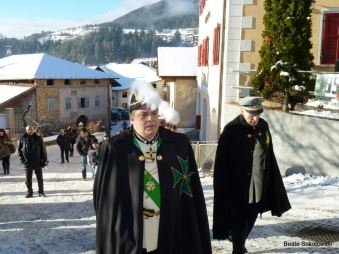
I wonder, did he nick that hat from Marshal Ney?
All jokes aside, The (Italian) self-styled Military and Hospitaller Order of Saint Lazarus of Jerusalem is a large organisation and has fooled a lot of people with its extravagant ceremonies. Do not be one of those. It seems to me lik a group of want-to-be generals and knights, who masquerade as aristocrats and other important personages. The truth is, The (Italian) Military and Hospitaller ‘Order’ of Saint Lazarus of Jerusalem has, as far as I can se, no credibility whatsoever, and is merely another group of grown men playing dress-up. If anyone is approached by this self-styled group, stay clear of them by a mile.
The real Orders
There are currently two Orders of St Lazarus that are generally considered to be the only two legitimate Orders of St Lazarus. The first of these enjoys the patronage of the Orleanist Royal House of France & the Count of Paris (who has expressly stated he supports no other Orders of St Lazarus), as well as the Cardinal-Archbishop of Prague. It was led up until 2010 by the Count’s Nephew, who uses the title Duc d’Anjou (not to be confused with the legitimist head of the French Royal House, Louis XX, also currently using the title Duc d’Anjou).
The second of these Orders received recognition by the Spanish government in 1940. In 2008, King Juan Carlos I allowed his cousin Carlos Gereda y de Borbon to become its Grand Master.
It should be noted that, there are many more fake orders of St Lazarus, which, eventually, will all be written on. This was the primary reason for my using of the word ‘Italian’ when talking about this fake group.

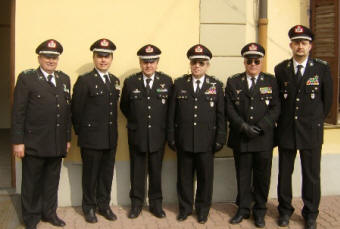
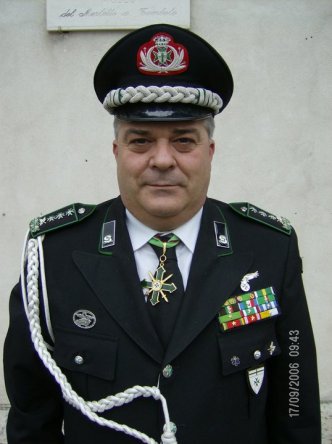
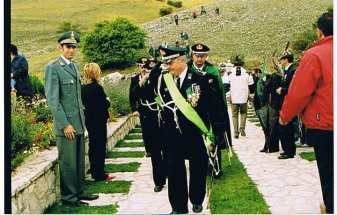
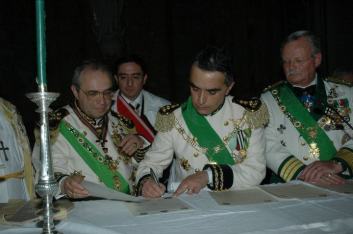
The Cantacuzino is an old noble princely family, and is matriculated as such in Sweden in the Association of the Unintroduced Nobility of Sweden. For some reason this “Order” has put him forth as royalty (HRH), while at the same time describing the Grand Masters father – who was a member of the Order as “HH” (which is correct). See http://jonar242.wordpress.com/2013/08/27/sankt-lazarusorden-av-jerusalem-nu-under-prins-pieter-cantacuzino/
There are no genuine Orders of St Lazarus. Both the one now headed by Count Dobrzensky (and formerly by Prince Charles-Philippe d’Orleans) and the other headed by the Marques de Almaxan derive from a 1910 invention with a manufactured “history” whose claims to antiquity have no foundation.
Guy, a little moderation please….you are passionate indeed, but the OSt.LJ was a canonical entity until, by your own calculation, until1957. The absence of evidence is not evidence of absence, and there is some evidence for a continuation of the order, and a legal and plausible historical case can be made…as shall be shown
The purely theoretical claim to canonical survival has never been applied when an Order’s benefices have been lost. The only time monastic foundations have been perpetuated was when all the members were deceased and there was a need to combine its remaining benefices with another canonical foundation, as in 1777 with the Order of St Anthony Abbot. I am told so often that there is “evidence” of survival, but nothing has ever been produced to substantiate this empty claim. Indeed I have personally researched the archives Nationales and found only statements that confirm the decision not to make appointments and let it become extinct. For it to have survived, new members had to be received according to the proper forms and this was quite impossible after 1789.
why specifically impossible? Are you saying that the post 1789 grand masters and protectors down to Charles x couldn’t have appointed anyone even they wanted to? Or are you merely reasserting that given the clear records that affirm the crown’s intent to let the order die, that is historically impossible for appointments to have been made given these pronouncements? Also what about the good evidence For Tzar Paul 1, Baron Von Dreissen? I know that these may well have been irregular, but I’d like to explore this deeper myself. I also just read a doctoral dissertation asserting that the SMOM was equally defunct after the napoleonic debelatio, when it also tried to knight the orthodox Paul I? Could the current Spanis obedience be considered a patriarchal commemorative chivalric organization
Purely “theoretical claim”…this isn’t a convincing argument from you, when you are clearly the source pf this claim…elaborate without passion please.
I say purely theoretical because no canonical institution has EVER been revived once it no longer has properly received members AND no benefices. The reason for this clause in canon law is to preserve ecclesiastical control over the benefices of an ecclesiastical foundation if all the members were dead. Those orders which were amalgamated with other canonical institutions after there were no more members (the Order of St Anthony Abbot, in 1777, for example) were considered existing solely to insure that the benefices remained under ecclesiastical control.
As for the Order of Malta, the election of Emperor Paul I of Russia had no effect whatsoever on the legal existence of the Order; no more, for example, than the deposition of Charkes X and his replacement by Louis-Philippe had any effect on the existence or sovereignty of France. During the entire period if its history from 1113 the Order of the Hospital of St John of Jerusalem remained a canonical institution, controlled its own benefices (there was never a period when it did not have some benefices, even after the loss of Malta it still controlled its benefices in Sicily, Austria and Bohemia (and the latter two are still in the Order’s control), also in Spain until 1808, in other parts of Germany variously until 1806 while it lost and recovered benefices in Italy.
Emperor Paul’s establishment of the non-Catholic grand priory, which ceased to exist in 1811 (although the members were able to continue to wear their insignia) was comparable to Louis XVIII’s award of the cross of honour (it’s very description evidence that it was an abnormal award) to Baron von Dreisen. He did not thereby become a member of the canonical institution, the Order of Our Lady of Mount Carmel and St Lazarus of Jerusalem just as those who received the cross of Malta in Paul’s new priory were ,embers of the priory but not the Order. They understood this very well so in the elections of 1803 accepted that the Catholic Russian Grand Priory would vote on behalf of the non-Catholic Knights, who could not elect delegates to the chapter-general that would chose the new head of the Order. Both grand priories chose the same candidate, Tomassi, who became grand master and was recognised as such by the Pope and Emperor Alexander I.
As for Louis XVIII and Charles X appointing a grand master of St Lazarus, this could have been done but would have required the restoration of some if not all of the Order’s benefices and the receprion of new Knights according to the statutes which would gave had to have been reformed to reflect the provisions regarding the loss of nobiliary privileges enacted in the Constitutional Charter of 1814. Neither event happened. If the criwn had restored the benefices this would have (a) required compensating those then in legal possession, and (b) risking the revival of the law suits against the a Order that had ceased with the revolution. Neither would gave brought any advantage and it is very clear that there was no desire whatsoever to revive the a Order, particularly after the accession of Charles X who had never had any involvement with the Order, unlike his brother who wore the Order’s breast cross until his death. When it was laid out with his other decorations following his death, the Grand Master of Ceremonies,bathe a marquis de Dreux-Brézé stated in his memorandum that the Order was extinct.
Your argument though possibly (and seemingly) sound is also quite conjectural. Either Canon law stipulates that order exists , without qualification, for 100 years after the death of its last (regularly admitted) member, or, as you seem to suggest, Canon law also stipulates that this 100 year window of survival requires that the order has benefices in addition to regularly admitted new members–(which is, of course incongruous).
So the rationale for the 100 your continuance of an order after its last regularly member’s death might indeed be to preserve the church’s control of the order’s benefices (among other reasons that might be supposed, but, the fact is that St. Lazarus existed, if nothing else as a canonical order into the 20th century, allowing some maneuvers, however legitimate or not, to revive it, which is, of course the heart of the debate.
I posted an unedited draft and have tried to post the corrected text but it would not let me….
Here it is:
Firstly its benefices were confiscated in 1790 and the Order abolished by decree signed by Louis XVI. The 1802 Concordat did not demand its reinstatement. Possession of ecclesiastical benefices was the very rationale for it becoming a subject of canon law as a legal being in the first place. Secondly it could only have been revalidated or reformed by Apostolic authority which was certainly never forthcoming. There seems to be a widespread confusion about the dual nature of a confraternal religious Order, which is like the Benedictines, for example, in its religious aspect, and a royal confraternity in its chivalric aspect. The four Spanish military Orders were such, and the Constantinian Order likewise – the former still has the Order of Santiago’s church in Madrid, held by the council of the Orders while the Constantinian Order has never been abolished, suppressed or suspended . The Golden Fleece and Garter, in the other hand, while both had religious aspects were not per se subjects of canon law even though they were granted ecclesiastical privileges and the members had spiritual duties (in the Order of the Garter these are carried out by the Miltary Knights of Windsor on behalf of the Knight Companions). These Lazarus revivals lack both aspects (and even the Count of Paris has now renounced his short-lived putative “Protectorate” of the so-called Order).
Guy Sainty 119 Rue de l’Université 75007 Paris
Sent from my iPad
>